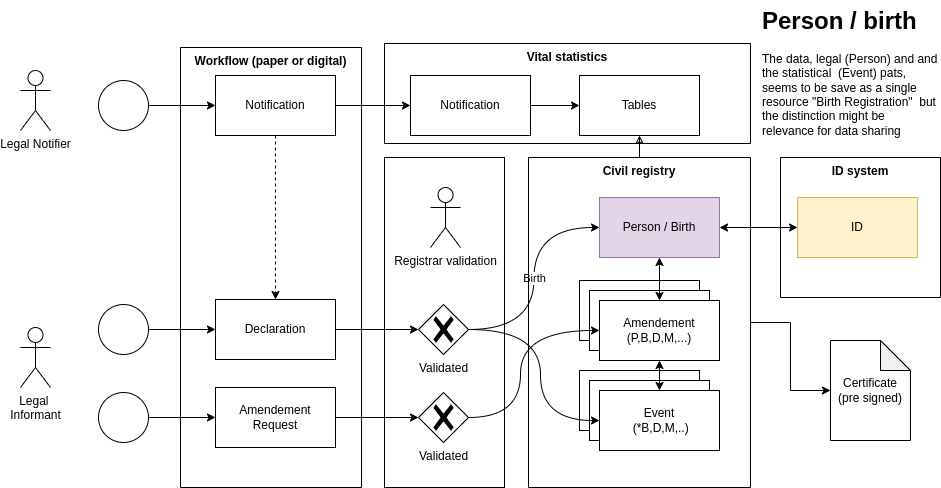

This fragment is not visible to the reader
This publication includes IP covered under the following statements.
| Type | Reference | Content |
|---|---|---|
| web | acsa.africa |
IG © 2024+ ACSA
. Package crvs.ig#0.1.0. Generated 2025-12-08
Links: Table of Contents | QA Report |
| web | docs.google.com | Link to Box 2 narrative in development |
| web | github.com | this is a copied and adapted version of SmartHealthCard https://github.com/smart-crvs/cr-cards |
| web | creativecommons.org | This specification is copyright by Computational Health Informatics Program, Boston Children's Hospital, Boston, MA and licensed under CC-BY 4.0 . |
| img | i.imgur.com | |
| web | developer.mozilla.org |
Issuers SHALL publish their public keys as JSON Web Key Sets (see RFC7517
), available at <<iss value from JWS>>
+ /.well-known/jwks.json
, with Cross-Origin Resource Sharing (CORS)
enabled, using TLS version 1.2 following the IETF BCP 195
recommendations or TLS version 1.3 (with any configuration).
|
| web | www.rfc-editor.org |
Issuers SHALL publish their public keys as JSON Web Key Sets (see RFC7517
), available at <<iss value from JWS>>
+ /.well-known/jwks.json
, with Cross-Origin Resource Sharing (CORS)
enabled, using TLS version 1.2 following the IETF BCP 195
recommendations or TLS version 1.3 (with any configuration).
|
| web | github.com | If individual revocation of SMART CR cards is not possible, then an issuer SHOULD revoke its issuing key, and allow users to obtain new CR cards; limiting the validity period of a key helps to mitigate the adverse effects of this situation. See the revocation FAQ for more details. |
| web | terminology.smarthealth.cards |
The type
, and credentialSubject
properties are added to the vc
claim of the JWT. The type
values are defined in Credential Types
; the https://smarthealth.cards#cr-card
SHALL be present; other types SHOULD be included when they apply. Verifiers and other entities processing SMART CR cards SHALL ignore any additional type
elements they do not understand. The issuer
property is represented by the registered JWT iss
claim and the issuanceDate
property is represented by the registered JWT nbf
("not before") claim (encoded as the number of seconds from 1970-01-01T00:00:00Z UTC, as specified by RFC7519
). Hence, the overall JWS payload matches the following structure (before it is minified and compressed
):
|
| web | terminology.smarthealth.cards |
credentialValueSet
. Restricts the request by FHIR
content such as "any standardized vaccine code for mpox". See CR card
Valuesets
.
Valueset-based filters apply to the ACSA STD Resources within the CR card
payload at .vc.credentialSubject.fhirBundle.entry[].resource
. For
RegisteredBirths, the RegisteredBirth.vaccineCode
is evaluated. For Observations,
the Observation.code
is evaluated. Multiple credentialValueSet
parameters
in one request SHALL be interpreted as a request for credentials with content
from all of the supplied Valuesets (logical AND).
|
| web | terminology.smarthealth.cards |
SMART CR card value sets, to further restrict the request by FHIR
content such as "any standardized vaccine code for mpox". See CR card
Valuesets
.
Valueset-based filters apply to the ACSA STD Resources within the CR card
payload at .vc.credentialSubject.fhirBundle.entry[].resource
. For
RegisteredBirths, the RegisteredBirth.vaccineCode
is evaluated. For
Observations, the Observation.code
is evaluated.
|
| web | docs.smarthealthit.org | Deprecation note: As of December 2022, support for chunking has not been widely adopted in production SHC deployments. For SHCs that need to be presented as QRs, we recommend limiting payload size to fit in a single QR (when possible), or else considering SMART Health Links . |
| web | github.com | Commonly, CR cards will fit in a single V22 QR code. Any JWS longer than 1195 characters SHALL be split into "chunks" of length 1191 or smaller; each chunk SHALL be encoded as a separate QR code of V22 or lower, to ensure ease of scanning. Each chunk SHALL be numerically encoded and prefixed with an ordinal as well as the total number of chunks required to re-assemble the JWS, as described below. The QR code FAQ page details max JWS length restrictions at various error correction levels. |
| web | github.com | Technical security questions are covered in the security FAQ page . |
| web | vci.org | For COVID-19 Vaccination Credentials, the SMART CR cards: Vaccination IG defines requirements. |
| web | acsa.africa | The ACSA STD Validator can be used to validate the CR card's ACSA STD bundle |
| web | github.com | The CR cards Dev Tools can be used to validate the various CR card artifacts. |
| web | github.com | The code used to generate the examples present in the spec. |
| web | github.com | A Jupyter Notebook walkthrough and demo portals which demonstrate creating, validating and decoding a SMART CR card as a QR code. |
| web | demo-portals.smarthealth.cards | A Jupyter Notebook walkthrough and demo portals which demonstrate creating, validating and decoding a SMART CR card as a QR code. |
| web | github.com | The Libraries for SMART CR cards wiki page includes suggestions about useful libraries. |
| web | github.com | SmartHealthCard https://github.com/smart-crvs/cr-cards |
| web | acsa.africa | ACSA Standard: https://acsa.africa/std |
HL_flow.png 
|
tree-filter.png 
|